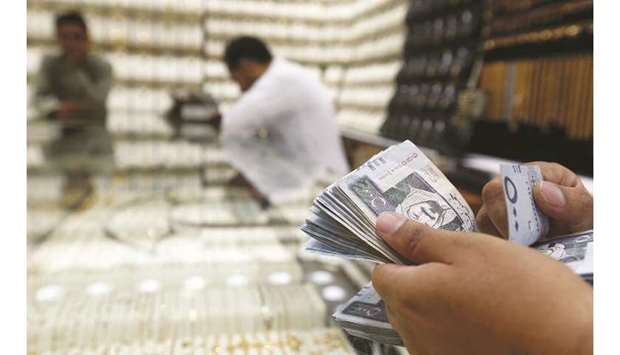Not everyone agrees that interest-rate cuts are warranted in the US, but monetary easing by the Federal Reserve is making looser policy possible where it’s long overdue.
The central banks of Saudi Arabia and the UAE, the two biggest Gulf Arab economies, followed the Fed again on Wednesday after it reduced rates by a quarter percentage point for a second straight meeting. Policy makers in the region largely move in lockstep with the US to protect their currencies’ peg to the dollar.
The Saudi Arabian Monetary Authority cut its repo rate by 25 basis points to 2.5% and its reverse repo rate to 2%.
The UAE’s central bank lowered the repo rate and its certificates of deposit rate by a quarter percentage point.
Kuwait, which maintains a peg to a basket of currencies, kept its discount rate at 3%.
Despite the economic upheaval after the crash in oil prices more than four years ago and the sluggish recovery that followed, Gulf policymakers held off on rate cuts until the Fed ended its extended tightening cycle and trimmed borrowing costs in July. After a wallop of economic uncertainty in the wake of the attack on oil infrastructure in Saudi Arabia, monetary relief could hardly come at a better time.
“It’s a gift from the Fed,” Marcus Chenevix, an analyst at investment research firm TS Lombard in London, said before the announcements. “They’re suddenly allowed to loosen when the US probably shouldn’t.”
In the days before the Fed’s meeting this week, the region’s biggest economy, Saudi Arabia, has had to contend with the aftermath of the strike on the crucial Abqaiq oil facility. Top officials have insisted that the kingdom’s public finances have escaped unscathed.
Still, central bank governor Ahmed Abdulkarim Alkholifey was on the lookout for rates to fall.
In the UAE, whose economy has struggled to shake off a slump in real estate, lower US rates “could put downward pressure on the dollar and thus make dirham-denominated properties more affordable,” according to the Institute for International Finance.
A looser stance by central banks will ultimately be no match for government spending, meaning it’s the prospect of fiscal stimulus that could dictate the outlook in the Gulf, according to Mohamed Bardastani, a Dubai-based senior economist at Oxford Economics.
“Monetary policy often plays a secondary role in terms of driving the economic outlook,” he said “Fiscal policy has a much larger weight and is a traditional growth driver.”

A man counts Saudi riyal banknotes in a jewellery store in Riyadh (file). The Saudi Arabian Monetary Authority has cut its repo rate by 25 basis points to 2.5% and its reverse repo rate to 2%.


